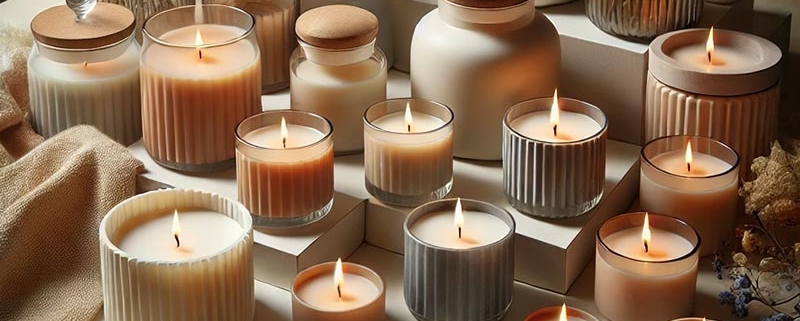Characteristics of scented candle production
The production of scented candles involves unique material composition, precise processes, and rigorous safety standards, especially as consumer demand for eco-friendly products increases. Here are some key aspects:
- Material Selection and Environmental Impact
The main ingredients for scented candles include wax, fragrance, and wicks. Eco-conscious producers often use natural waxes like soy, coconut, or beeswax instead of paraffin, which reduces smoke and toxic residue upon burning. Natural essential oils are favored for scent, offering therapeutic benefits, but they can be more costly compared to synthetic fragrances, which provide long-lasting scents but lack natural therapeutic effects.
- Fragrance Ratio and Scent Throw
The ratio of fragrance to wax, as well as the timing of fragrance addition, are crucial. Typically, fragrances are added at around 5-10% of the total wax volume, at a specific temperature, to ensure even, long-lasting scent throw. Different wax and fragrance combinations yield different scent strengths and burning durations, requiring extensive testing to optimize scent diffusion.
- Production Process and Cooling
Scented candle production requires heating, mixing, and cooling steps. The wax must be melted to an ideal temperature to blend with the fragrance effectively, while cooling rates are carefully controlled to prevent surface cracks or bubbles, ensuring a smooth appearance.
- Safety Testing and Wick Choice
Wick selection impacts flame height and smoke levels, with options like cotton and wooden wicks each lending different qualities to the burning experience. Wicks must be tested for optimal length and material to prevent excessive soot. Burn tests are essential to confirm the candle burns evenly, releases scent well, and maintains safety standards.
- Market Demand and Innovation
Consumers increasingly favor aesthetically pleasing and unique designs, so scented candles often feature creative fragrances, eco-friendly packaging, and visually appealing containers. Innovations continue to cater to eco-conscious preferences and elevate the sensory experience without compromising on safety and quality.



